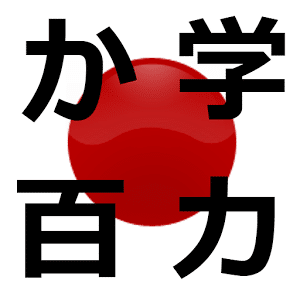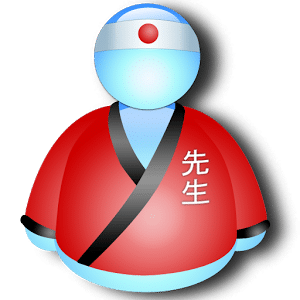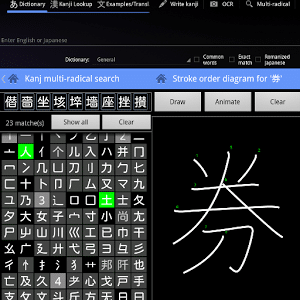
16 Best Japanese Learning Tools to Help You Learn Fast (Online and Offline)
Looking for the best Japanese learning tools?
You’ve come to the right place.
These essential apps, books, browser plugins and online learning platforms will help you create a complete Japanese language-learning toolbox in no time flat—both online and off!
So let’s get started!
Contents
Download: This blog post is available as a convenient and portable PDF that you can take anywhere. Click here to get a copy. (Download)
Web-Based Platforms
1. Italki
One of the best ways to practice Japanese is by, well, actually using it. You can find a language exchange partner on italki, which is an online community of language learners.
It’s got a really nice interface and offers social networking features. You’ll also find teachers on the site who offer private teaching services.
2. FluentU
FluentU is both a website and app that uses authentic Japanese videos—sourced from real Japanese media, like YouTube videos, TV shows and anime—to create an immersion experience.
While watching the videos, you can follow along with interactive subtitles and click on any word to see its definition on-screen, or to add it to your custom vocabulary lists. The program also has a built-in flashcard system and personalized quizzes with a speaking feature for a well-rounded learning experience.
3. MyLanguageExchange.com
Another language exchange website you can try is MyLanguageExchange.com.
Yes, it has an interface that looks like it’s from the 90s… but it also has a very active and engaged community. It’ll be easy to find someone here who wants to email back and forth, exchange Line messages or even chat face-to-face on Skype.
Useful Apps
Apps are great because you can break them out and use them for a few minutes at a time, on the bus, at a coffee shop and so on.
Here are just a few of the many apps you should put in your toolbox.
4. Obenkyo
Though the app doesn’t really have a quiz interface like most of the other study apps out there, it’s really comprehensive. It has lots of kanji, lots of vocab and even grammar.
It’s especially useful if you’re an independent learner, want to create your own study materials, or want to supplement other programs of study.
5. JA Sensei
Here’s another great app that is also very comprehensive.
It’s a great way to learn everything from kana and kanji to vocabulary. It includes quizzes to help you track your progress, conjugation charts for verbs, detailed grammar info and audio clips.
The paid version of the program includes plenty more features and the app is constantly getting updated with new functionality.
6. Anki
Anki is an extremely popular flashcard tool for kanji practice. Though I’ve run into the occasional bug trying to get it to work on my smartphone, it’s a fantastic app when you do get it up and running.
This open-source program has a ton of flashcard sets created by Japanese aficionados from around the world. So you can experiment to find the ones that fit your tastes and your language-learning needs.
You can find even more options for Japanese dictionaries in another post.
7. WWWJDIC
WWWJDIC (don’t you love the name?) is a front-end app for the well-known website. The app is much prettier than the website, but both provide lots of information.
Most of the apps on our list are available for Android, but there are plenty of options for iPhone users, as well.
Finally, for some great recommendations on translation apps and dictionary apps, see the FluentU post, “10 Awesome Japanese Dictionary Apps to Read and Define Anything.”
Browser Plugins
Surfing Japanese websites can be really frustrating when you’re still learning kanji. That’s why you should grab a browser plugin that does the dictionary work for you.
8. Rikaikun
This is an invaluable Chrome plugin that looks up Japanese kanji and vocabulary when you hover over them with the mouse. It’s a simple dictionary, but boy is it useful!
It not only defines kanji, it also has a huge bank of Japanese vocabulary.
9. Safarikai
And if you use Safari, look for this one.
10. Perapera
Here’s another Firefox plugin that looks and works much the same as Rikaichan.
11. Japanese Input for Windows
Every Japanese student will need to type in Japanese at some point or other. Luckily, typing in Japanese is free and easy to set up.
There are instructions online for setting up your keyboard to type in Japanese. All you need to do is open up your control panel, make a couple tweaks and you’re all set. In no time at all, you’ll be able to type in Japanese with your English keyboard.
Hiragana comes out first, and then you turn the hiragana into kanji as needed.
For those Mac users out there, Red Cocoon has instructions on how to set up Japanese input on your Mac OS.
Offline Tools
Online tools are fast, convenient and oftentimes free. But everybody needs to supplement their online toolbox with some offline materials.
12. Textbooks
You won’t get far with your Japanese learning without a good textbook!
For textbooks, grammar books and reference books, check out our post, “The 15 Best Books to Learn Japanese for Any Skill Level.”
13. Physical Flashcards
If you want to buy some professionally designed Japanese flashcards, White Rabbit Press gets my recommendation. They include vocabulary, sounds, meanings and much more.
Due to online competition, their price has been reduced and is much more reasonable now…when I bought all three sets they cost me around $200.
If you have the time, you can also make your own flashcards by hand! All you need is some index cards and a pen or marker.
14. Electronic Dictionary
How hardcore are you?
If you’ve got the money to spare, grab an electronic dictionary.
Mine’s a Seiko brand, but it’s still the best offline dictionary I’ve ever found. Here’s what to look for in a hand-held electronic dictionary: a Japanese-English dictionary, an English-Japanese dictionary, a Japanese-Japanese dictionary and a kanji dictionary.
Mine also includes an English-English dictionary, idioms, a calculator and a few other functions.
Two other popular brands are Casio and Sharp.
15. Notebooks
A notebook’s a notebook, right?
Well, yes and no.
The right notebook can make your practice even more enjoyable. I personally recommend the gridded moleskines if you’re just starting out with kanji practice. You can use the vertical lines to help you keep all your kanji organized and properly sized.
Of course you can choose any notebook that you personally like using.
16. Japanese Pens and Pencils
Just kidding. (Wait. This really is a thing! You’re welcome.) This can be a great way to motivate yourself to study, and will help make studying with pen and paper more engaging.
Hopefully you’ve found this list helpful. Most of these Japanese learning tools are free, free to try or cheap.
So head out and start filling up your toolbox right now.
But don’t be a stranger!
Download: This blog post is available as a convenient and portable PDF that you can take anywhere. Click here to get a copy. (Download)









